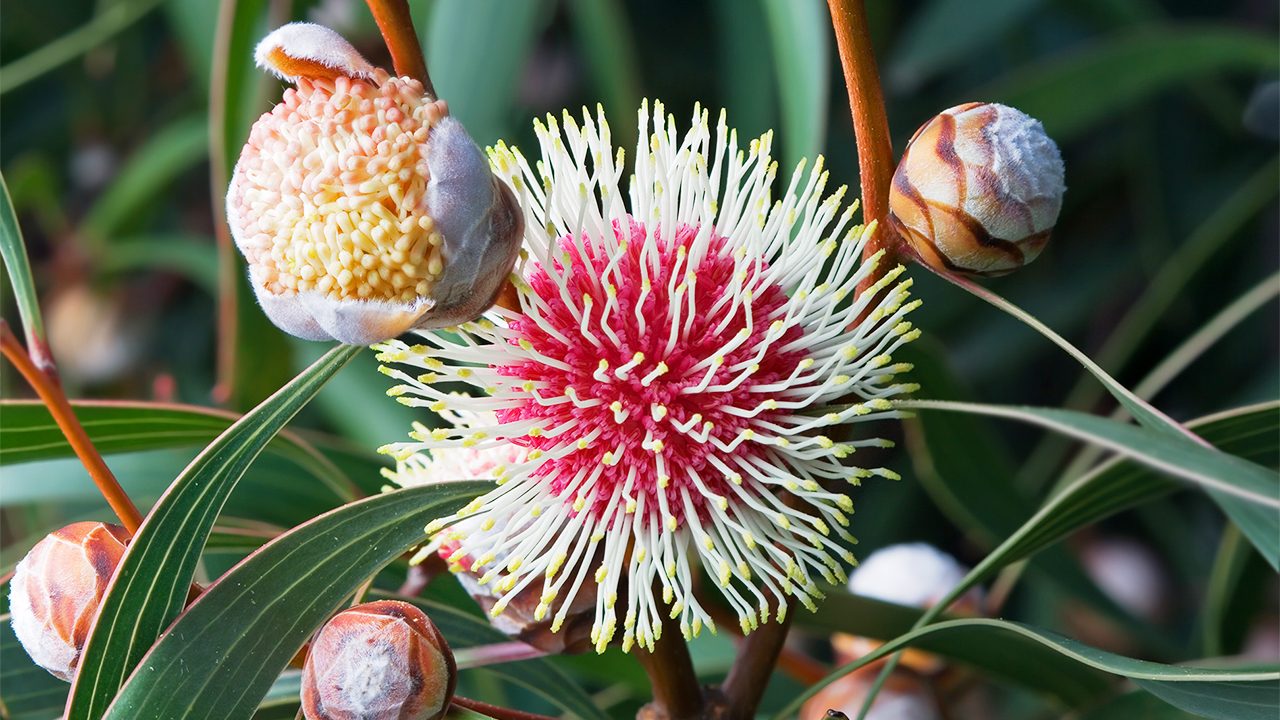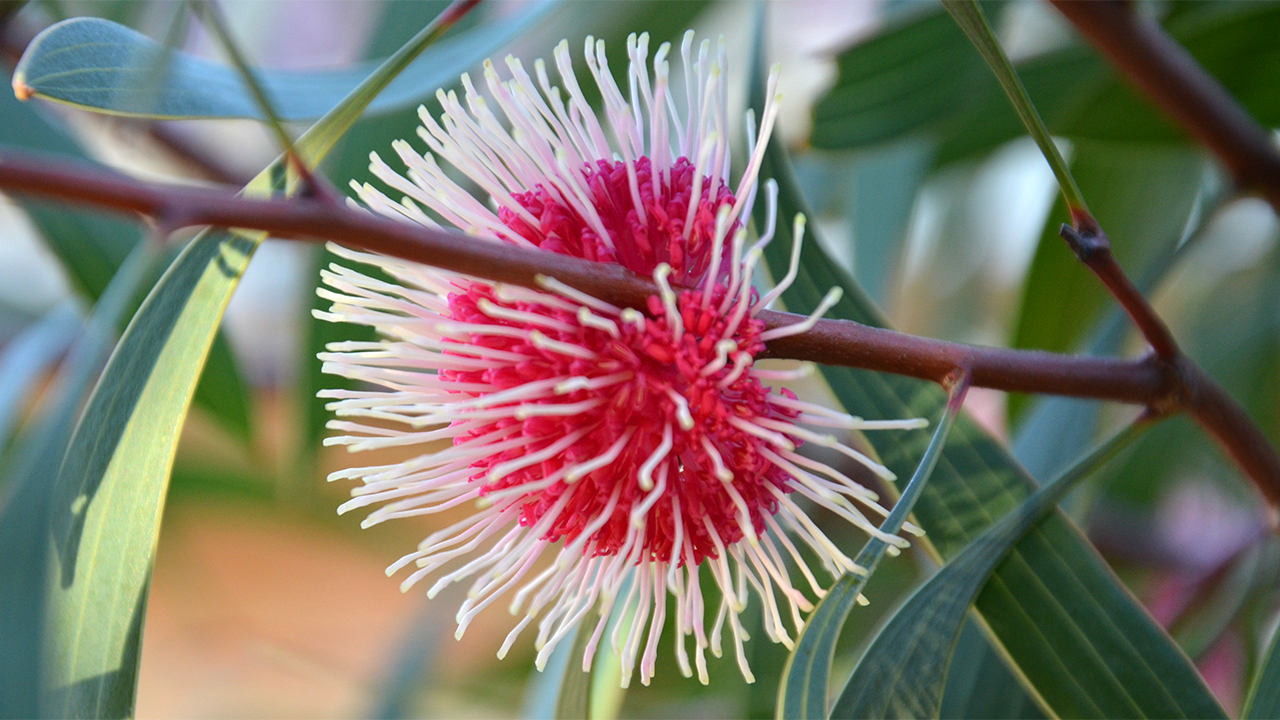Hakea is a diverse genus of Australian native plants, known for their striking flowers and unique foliage. Hardy and versatile, they thrive in various climates and garden settings.
Hakea is a genus of Australian native plants known for their remarkable diversity, striking flowers, and unique foliage. These hardy plants are well-suited for various garden settings and can thrive in many climates, making them a popular choice for gardeners seeking to add texture and color to their landscapes.
Hakea laurina, also known as Pincushion Hakea, is renowned for its stunning spherical flower heads that resemble a pincushion. The flowers are usually red and white, attracting birds and pollinators. The foliage is blue-green, adding an attractive contrast to the vibrant blooms. Hakea sericea, or Needlebush Hakea, features dense, needle-like leaves and produces masses of white or pink flowers. Its spiky foliage can create an effective barrier or hedge.
Hakea salicifolia, known for its willow-like leaves, offers white or pale pink flowers that bloom in clusters. It is often used for screening or as a windbreak due to its dense growth habit. Hakea petiolaris, characterized by its round, spiky flower heads, typically blooms in pink or white. It is a small tree or large shrub that can serve as a striking focal point in gardens. Hakea victoria is notable for its stunning foliage, with leaves that turn shades of red, yellow, and orange. It produces creamy white flowers and is a favorite for ornamental use.
Hakeas are generally easy to grow and require minimal maintenance once established. They prefer well-drained soil and can tolerate poor soils, including sandy and rocky types. It’s essential to plant them in a spot with good drainage to prevent root rot. If planting in clay soil, improve drainage by adding sand or organic matter. While hakeas are drought-tolerant, they need regular watering during their first year to establish a strong root system. Once established, they require minimal watering, making them ideal for low-water gardens.
These plants thrive in full sun but can tolerate partial shade. Full sun exposure encourages more prolific flowering and healthier growth. Hakeas generally do not require much fertilizer. Avoid high-phosphorus fertilizers, as they can harm native plants.
Incorporating hakeas into your garden can provide year-round interest and support local wildlife. Their varied forms, from shrubs to small trees, and their vibrant flowers and foliage make them versatile additions to both native and ornamental garden designs. For more detailed information on specific Hakea species and their cultivation, resources like the Australian National Botanic Gardens and local horticultural societies can provide valuable guidance.
Discover Beautiful Flowers, Expert Gardening Tips & Interesting Plant Science!
By submitting this form, you are consenting to receive marketing emails from: . You can revoke your consent to receive emails at any time by using the SafeUnsubscribe® link, found at the bottom of every email. Emails are serviced by Constant Contact

About The Author
John Bagnasco has been in the gardening industry for over 50 years, starting with a horticulture degree from Michigan State University and following a stint at Frank’s Nursery and Crafts in Detroit.
After publishing his first book “Plants for the Home Vol. I” in 1976, he moved to California to become regional manager and buyer for the Nurseryland division of Sunbelt Nursery Group.
He then became the head buyer for Armstrong Garden Centers based in Glendora, California. John had a part-time affiliation with Creative Promotions for ten years before joining them full-time in October 2000 as a senior editor and radio personality for Garden Compass.
John has also taught horticulture classes at Palomar College and San Diego State University.
He is the host of the DVD “The Essential Guide to Roses,” which also features Bryan Main and Bruce and Sharon Asakawa.
His most recent book is “Planting Designs for Cacti and Succulents”.
Currently, John is a co-host on “Garden America,” an interactive live gardening show that additionally provides podcasts of the broadcasts accessible on all major platforms.
You can contact John here.


